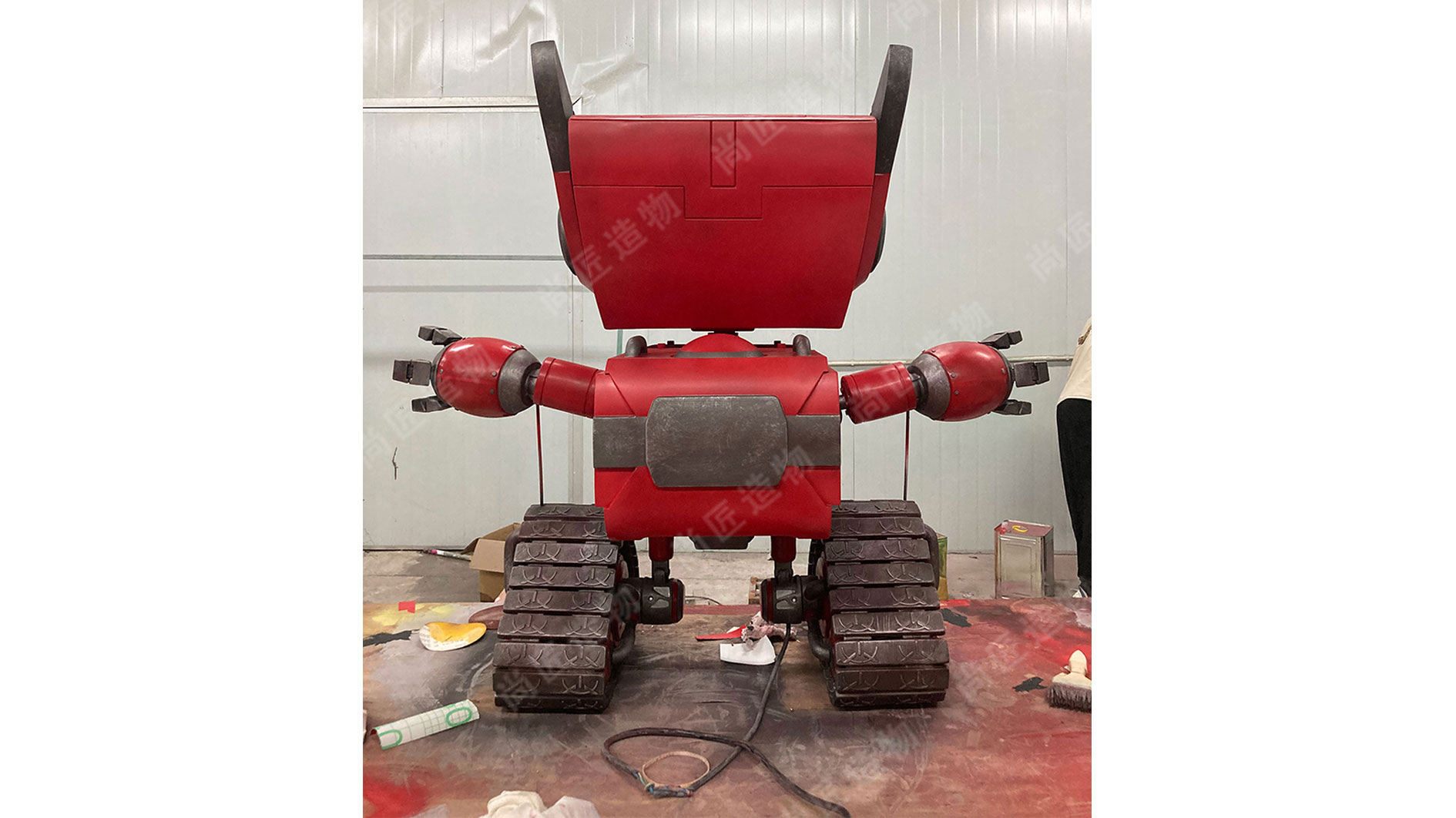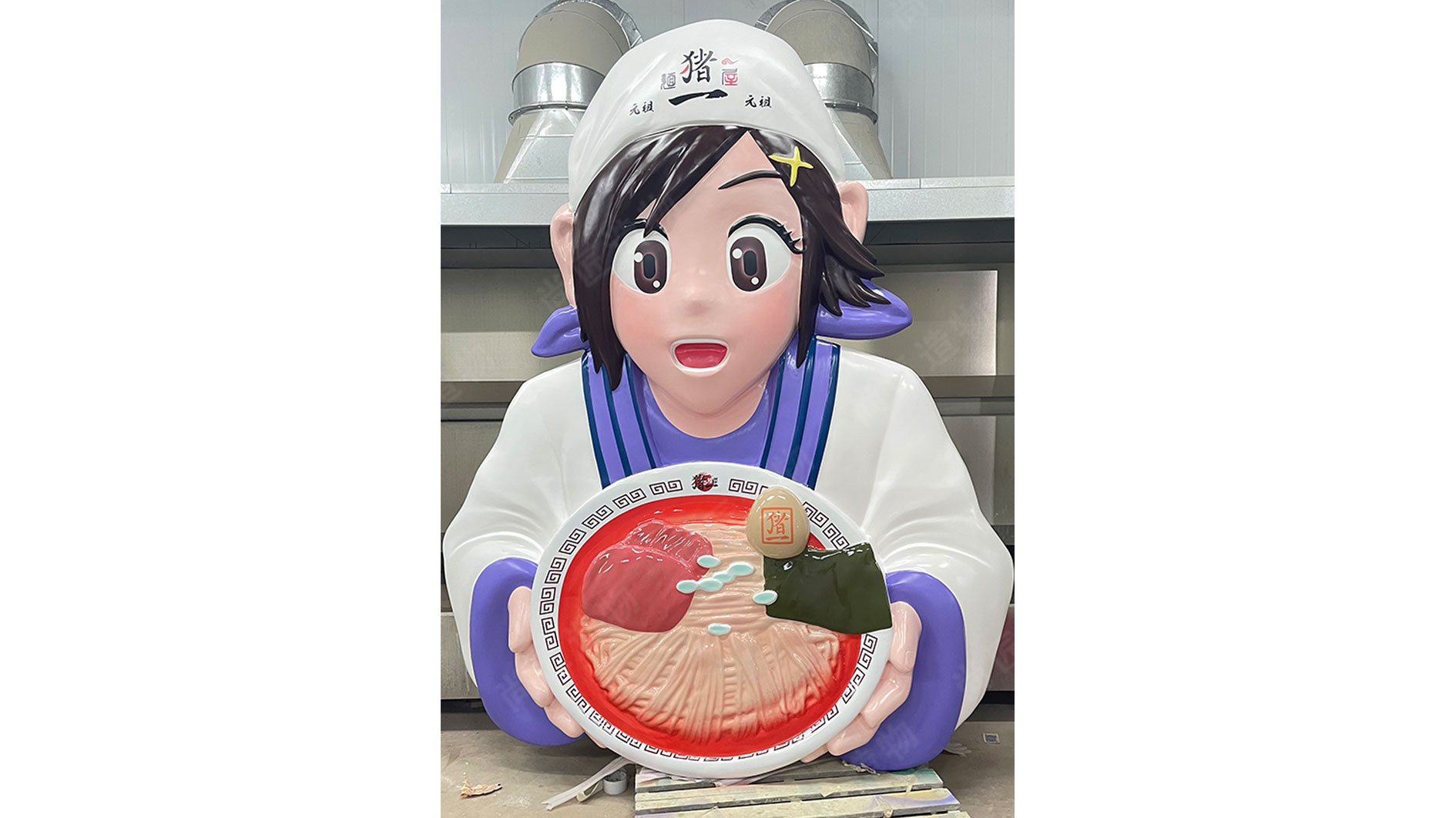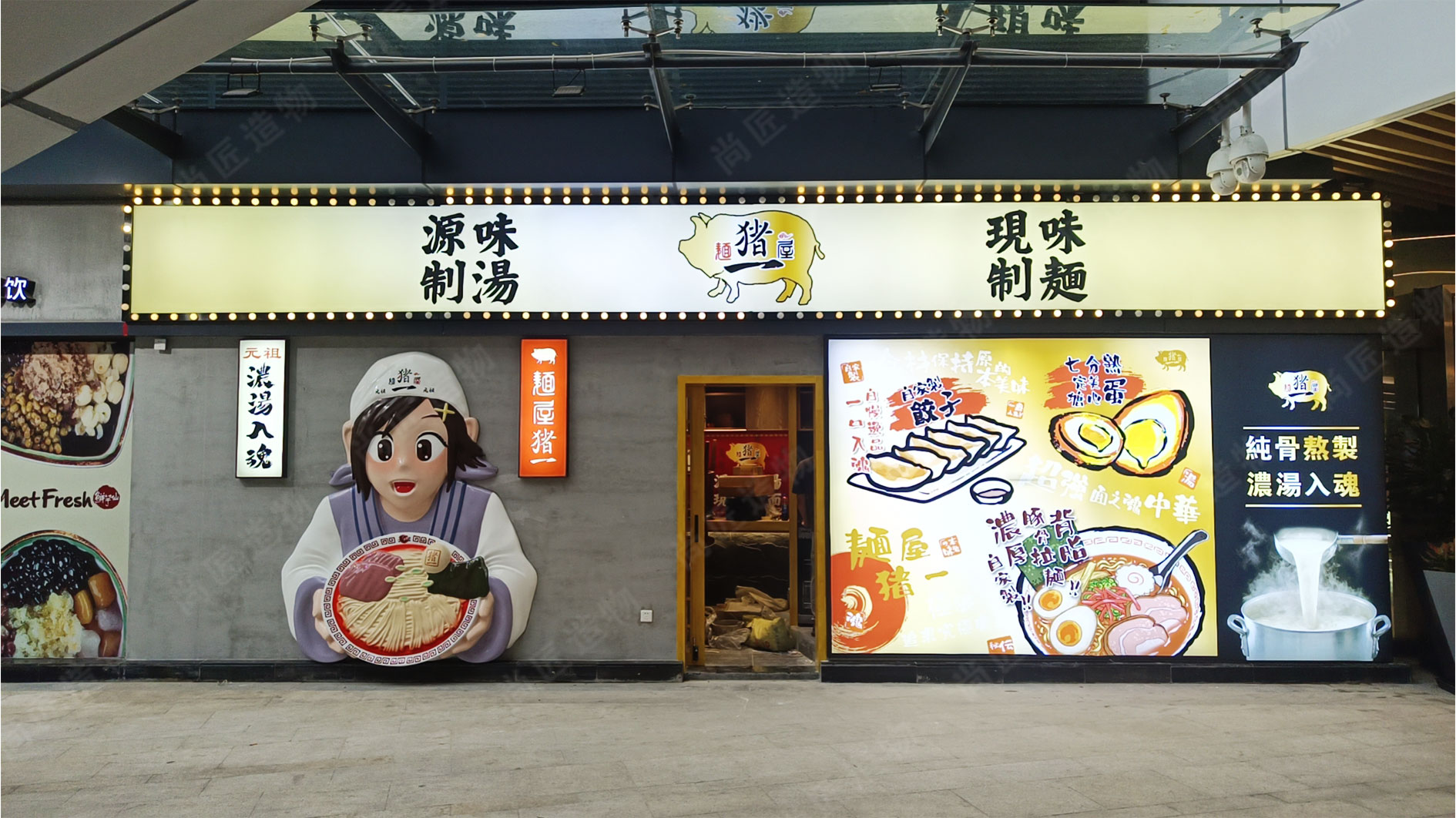Key Takeaways
Lightweight fiberglass statues offer unique advantages that make them superior to traditional materials like stone or bronze. Their composite construction blends fiberglass strands with concrete-like resins, creating sculptures that are 40-60% lighter than solid concrete yet equally durable. This combination addresses common challenges in garden and home decor:
"The magic of fiberglass-concrete lies in its ability to mimic heavy materials while eliminating their practical drawbacks," notes landscape architect Elena Torres. "You get the visual impact of stone without the backache."
Three critical factors define their value:
- Weight-to-strength ratio (Withstands 120+ mph winds when anchored)
- UV-stable coatings (Retain color fidelity for 8-12 years outdoors)
- Moisture resistance (Impervious to freeze-thaw cycles down to -30°F)
| Feature | Fiberglass-Concrete | Traditional Stone | Cast Metal |
|---|---|---|---|
| Average Weight | 15-40 lbs | 80-300 lbs | 50-200 lbs |
| Weather Proofing | Built-in | Requires sealant | Prone to oxidation |
| Detail Precision | <1mm resolution | 3-5mm resolution | 2-4mm resolution |
For optimal performance, position statues on stable surfaces and clean annually with mild soap. Their cellular structure resists moss growth, making them ideal for shaded garden areas. Unlike porous materials, these statues won't develop water stains or mineral deposits, maintaining their aesthetic integrity through seasonal changes.

Lightweight Fiberglass Statues: Key Benefits Explained
Fiberglass statues have become a preferred choice for both indoor and outdoor decor due to their unique blend of practicality and aesthetic appeal. Unlike traditional materials like stone or metal, fiberglass-concrete composites weigh up to 70% less while maintaining structural integrity. This lightweight quality simplifies installation and repositioning, making them ideal for seasonal displays or temporary installations. For instance, garden enthusiasts can effortlessly relocate Realistic sculpture pieces without heavy equipment.
Durability is equally noteworthy. Fiberglass resists corrosion, UV damage, and temperature fluctuations, ensuring statues retain intricate details—from textured foliage to delicate facial features—for decades. Unlike wood or plaster, these statues won’t warp, crack, or fade, even in harsh climates. Additionally, their non-porous surface minimizes moisture absorption, reducing mold risks.
The material’s versatility supports complex designs without sacrificing strength, enabling artists to craft lifelike forms that heavier materials struggle to replicate. Combined with eco-friendly manufacturing processes, fiberglass-concrete statues offer a sustainable alternative to resource-intensive options. These attributes make them a practical investment for homeowners and landscapers prioritizing longevity and adaptability.
Weather-Resistant Concrete Sculptures for Any Space
Fiberglass-reinforced concrete sculptures thrive in diverse environments due to their engineered resilience. The composite material’s non-porous surface repels moisture, preventing cracks from freeze-thaw cycles or prolonged humidity. Unlike traditional stone or wood, these sculptures resist UV degradation, maintaining color vibrancy even under direct sunlight. Their structural stability withstands wind loads up to 80 mph, making them suitable for coastal areas or open landscapes prone to storms.
The blend of fiberglass polymers and concrete allows for precise replication of textures—from weathered stone finishes to smooth modernist surfaces—without sacrificing durability. This adaptability extends their use beyond gardens to indoor spaces like sunrooms or entryways, where temperature fluctuations are common. For specialized applications, IP character sculpture designs demonstrate how intricate features remain intact despite harsh weather exposure.
By combining weatherproofing with artistic flexibility, these sculptures eliminate seasonal maintenance routines like sealing or repainting. Their consistent performance across climates ensures decorative elements stay visually striking year-round, bridging functional durability with aesthetic versatility.
Durable Garden Art: Mobility Meets Longevity
Fiberglass-concrete statues redefine garden decor by harmonizing structural resilience with practical portability. Unlike traditional stone or metal sculptures, these pieces weigh up to 70% less, enabling effortless repositioning to refresh outdoor layouts or protect pieces during extreme weather. Advanced composite materials resist cracking, fading, and corrosion, even when exposed to UV rays, heavy rain, or freezing temperatures. This durability ensures intricate designs—from classical figures to playful Cartoon sculpture pieces—retain their aesthetic precision for decades. The combination of lightweight construction and ruggedness makes them ideal for high-traffic areas, where accidental bumps or seasonal rearrangements are common. Gardeners appreciate how these statues avoid sinking into soft soil—a frequent issue with heavier alternatives—while maintaining stability in windy conditions. Additionally, their low-maintenance surfaces repel dirt and require only occasional rinsing, preserving visual appeal without intensive upkeep. By balancing portability with year-round endurance, fiberglass-concrete art adapts to evolving garden themes while serving as lasting focal points in dynamic outdoor spaces.
Eco-Friendly Statues Creating Calming Atmospheres
Fiberglass-concrete statues offer more than visual appeal—they align with sustainable living by utilizing eco-conscious materials. Unlike traditional stone or metal sculptures, these statues often incorporate recycled fiberglass and low-impact resins, reducing resource consumption during production. Their manufacturing process generates minimal waste, and the inert materials resist leaching harmful chemicals into soil or water systems. This environmental compatibility makes them ideal for gardens, patios, or meditation spaces where harmony with nature is prioritized.
The smooth, weather-resistant surfaces of Fiberglass sculpture require no toxic sealants or frequent repainting, further supporting eco-friendly upkeep. Design versatility allows for nature-inspired motifs—flowing water patterns, leafy textures, or abstract organic forms—that enhance tranquil settings. When placed near greenery or water features, their neutral tones and lightweight profiles blend seamlessly, fostering a sense of balance. By combining sustainability with aesthetic flexibility, these statues become subtle yet impactful elements in creating spaces designed for reflection and calm.
Indoor-Outdoor Versatility in Fiberglass Decor
Fiberglass statues excel in bridging indoor and outdoor design needs, offering flexibility rarely matched by traditional materials. Unlike stainless steel sculptures, which often prioritize industrial aesthetics, fiberglass-concrete blends adapt to diverse settings—from garden pathways to living room shelves. Their lightweight construction allows easy repositioning, enabling seasonal displays or sudden weather changes without requiring heavy equipment. Weather-resistant coatings protect against UV rays, moisture, and temperature fluctuations, ensuring colors stay vibrant whether placed beside a pool or on a sunlit patio.
This adaptability extends to stylistic coherence. Fiberglass statues replicate intricate stone or wood textures while maintaining a fraction of the weight, making them suitable for balconies, patios, or even tabletop arrangements. Homeowners can move pieces indoors during harsh winters without worrying about damage, preserving both the artwork and interior spaces. Additionally, the material’s non-porous surface resists mold and stains, reducing cleaning efforts compared to porous alternatives like concrete or terracotta. By harmonizing practicality with aesthetic range, fiberglass decor simplifies creating unified themes across interior and exterior environments.

Low-Maintenance Sculptures with Intricate Detailing
Fiberglass-concrete statues achieve a rare balance between artistic complexity and practical upkeep. Their molded surfaces retain crisp details—from textured foliage patterns to delicate facial features—without the maintenance demands of traditional materials like stone or bronze. Unlike porous mediums that trap dirt or require seasonal sealing, the smooth, non-absorbent finish resists staining and microbial growth. A simple annual rinse with mild soap and water suffices to maintain their appearance, even in high-humidity environments. This durability extends to fragile elements: thin sculptural veins in wing structures or interlacing geometric designs remain intact despite exposure to wind and temperature fluctuations. For those seeking dynamic art, fiberglass enables kinetic sculpture mechanisms to operate smoothly for years without lubrication. The material’s dimensional stability prevents warping, ensuring that layered details in pieces like cascading water motifs or overlapping scales stay precisely aligned. By eliminating the need for chemical cleaners or specialized tools, these sculptures allow owners to focus on aesthetic enjoyment rather than preservation labor.

Sustainable Materials for Serene Home Gardens
Modern garden design increasingly prioritizes sustainability without compromising aesthetic appeal. Fiberglass-concrete statues excel in this balance, using composite materials that reduce environmental impact compared to traditional stone or resin alternatives. By incorporating recycled glass fibers and low-carbon concrete blends, these statues minimize resource consumption while maintaining structural integrity. Unlike untreated wood or metal, fiberglass-concrete resists rot, rust, and UV degradation, ensuring decades of use without frequent replacements.
This durability directly supports eco-conscious gardening practices. Homeowners avoid the waste cycle of replacing weathered decor, while non-toxic materials prevent soil or water contamination. The inert nature of fiberglass-concrete also means no harmful leaching during rain or irrigation, preserving garden ecosystems. Additionally, the lightweight composition reduces transportation emissions compared to heavier stone sculptures.
Beyond environmental benefits, the serene quality of these statues stems from their harmonious integration with natural settings. Smooth finishes mimic weathered stone, while customizable textures blend seamlessly with foliage, creating tranquil focal points that evolve with seasonal landscapes. By choosing sustainable materials, gardens become spaces of both ecological responsibility and enduring calm.
Why Fiberglass-Concrete Statues Outperform Traditional Options
Unlike traditional stone, wood, or metal sculptures, fiberglass-concrete statues address common limitations while enhancing practicality. Stone and concrete statues, though durable, often weigh hundreds of pounds, complicating placement and relocation. Wooden carvings, while lightweight, degrade quickly when exposed to moisture or pests. Metal artworks may rust or corrode over time, requiring frequent maintenance. Fiberglass-concrete blends eliminate these issues through advanced material engineering. The reinforced fiberglass core reduces weight by up to 70% compared to solid stone, allowing easy repositioning without sacrificing structural integrity. Meanwhile, the concrete outer layer provides resistance to UV rays, temperature fluctuations, and heavy rain—critical for outdoor installations.
This combination also preserves intricate designs better than porous materials like sandstone, which erode over time. For example, delicate floral patterns or textured finishes remain sharp for decades without chipping or fading. Additionally, fiberglass-concrete requires minimal upkeep compared to bronze or iron statues that need seasonal polishing or sealing. By merging the aesthetic appeal of traditional mediums with modern durability and functionality, these statues offer a sustainable, cost-effective solution for both residential and commercial spaces. Their adaptability across environments—from humid gardens to air-conditioned interiors—further solidifies their advantage over less versatile alternatives.
Conclusion
As we’ve explored, lightweight durable fiberglass statues offer a balanced fusion of practicality and artistic appeal. Their reduced weight simplifies repositioning, whether for seasonal garden updates or indoor redesigns, without compromising structural integrity. Unlike heavier stone or metal alternatives, these statues withstand harsh weather conditions—from frost to intense sunlight—while preserving fine details like textured surfaces or delicate patterns.
The eco-friendly nature of fiberglass-concrete composites further enhances their value, aligning with modern demands for sustainable décor. Minimal upkeep requirements, such as occasional cleaning, make them accessible for busy homeowners seeking lasting beauty. By blending mobility, resilience, and aesthetic versatility, these sculptures bridge functionality and artistry, proving ideal for creating tranquil gardens, lively patios, or thoughtfully curated indoor spaces. Their enduring performance ensures they remain focal points in evolving design landscapes.

FAQs
How do fiberglass-concrete statues compare to traditional stone or metal options?
Fiberglass-concrete blends offer superior weight reduction while maintaining structural integrity. Unlike stone, they resist cracking in freeze-thaw cycles, and compared to metal, they avoid rust or corrosion—ideal for humid or coastal environments.
Are these statues truly weather-resistant for year-round outdoor use?
Yes, the composite materials are engineered to withstand UV exposure, heavy rain, and temperature fluctuations. A protective gel coat layer further shields surfaces, preserving paint and intricate textures for decades.
How easy is it to relocate lightweight fiberglass statues?
Weighing up to 70% less than concrete equivalents, most pieces can be carried by two people. Reinforced internal frameworks prevent damage during movement, making seasonal rearrangements or storage hassle-free.
What maintenance do fiberglass statues require?
Annual cleaning with mild soap and water suffices. Avoid abrasive tools to protect finishes. For painted designs, a UV-resistant wax applied every 3–5 years helps maintain vibrancy in direct sunlight.
Do these sculptures hold fine artistic details effectively?
Fiberglass molds capture even subtle textures, from floral patterns to facial expressions, with precision. The material’s rigidity prevents warping, ensuring details remain sharp over time.
Can fiberglass statues be used indoors without overwhelming spaces?
Their reduced weight allows placement on delicate surfaces like floating shelves or thin tabletops. Non-porous materials also resist indoor humidity, making them suitable for bathrooms or sunrooms.
Are these statues environmentally friendly?
Fiberglass-concrete production uses recycled materials in up to 40% of mixes, and the statues’ longevity reduces replacement waste. Low-energy manufacturing aligns with sustainable landscaping goals.
 ch
ch English
English






